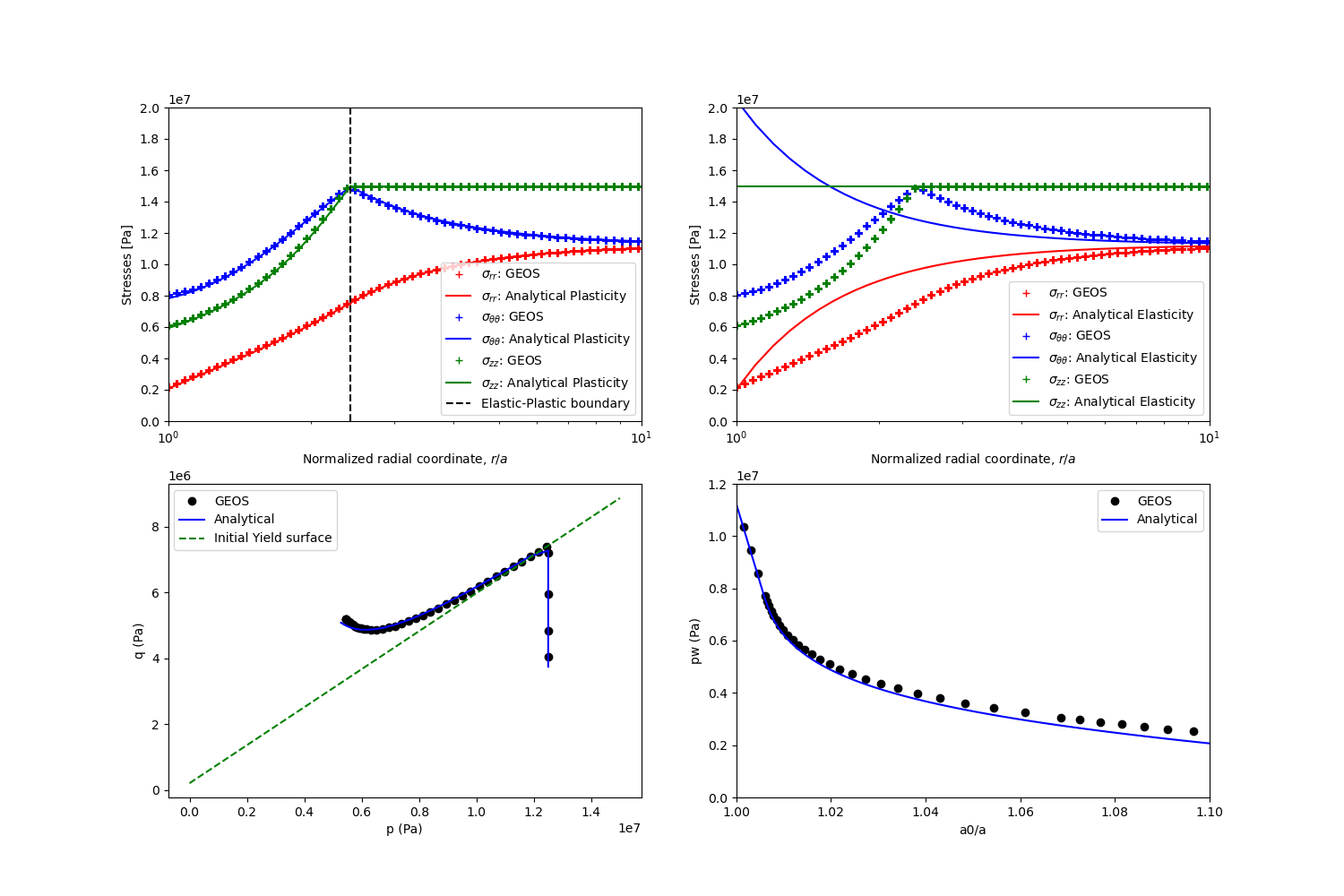Drucker-Prager Model with Hardening for Wellbore Problems
Context
This is an alternative to the example Extended Drucker-Prager Model for Wellbore Problems, and the Drucker-Prager constitutive with cohesion hardening (see Model: Drucker-Prager) is hereby considered. Analytical solutions to this problem are not provided from literature work, however they can be derived following (Chen and Abousleiman 2017). Details of those solutions are given in Python scripts associated to this example.
Input file
This example uses no external input files and everything required is contained within two xml files that are located at:
inputFiles/solidMechanics/DruckerPragerWellbore_base.xml
inputFiles/solidMechanics/DruckerPragerWellbore_benchmark.xml
The related integrated test is
inputFiles/solidMechanics/DruckerPragerWellbore_smoke.xml
The Drucker-Prager material properties are specified in the Constitutive section:
<Constitutive>
<DruckerPrager
name="rock"
defaultDensity="2700"
defaultBulkModulus="0.5e9"
defaultShearModulus="0.3e9"
defaultCohesion="0.1e6"
defaultFrictionAngle="15.27"
defaultDilationAngle="15.0"
defaultHardeningRate="10.0e6"/>
</Constitutive>
Here, rock is designated as the material in the computational domain. Drucker Prager model DruckerPrager is used to simulate the elastoplastic behavior of rock. The material parameters, defaultFrictionAngle, defaultDilationAngle and defaultCohesion denote the friction angle, the dilation angle, and the cohesion, respectively. In this example, the hardening of the cohesion is described by a linear hardening law, which is governed by the parameter defaultHardeningRate. The constitutive parameters such as the density, the bulk modulus, and the shear modulus are specified in the International System of Units.
The parameters used in the simulation are summarized in the following table.
Symbol |
Parameter |
Unit |
Value |
|---|---|---|---|
Bulk modulus |
[MPa] |
500 |
|
Shear Modulus |
[MPa] |
300 |
|
Cohesion |
[MPa] |
0.1 |
|
Friction Angle |
[degree] |
15.27 |
|
Dilation Angle |
[degree] |
15.0 |
|
Hardening Rate |
[MPa] |
10.0 |
|
Horizontal Stress |
[MPa] |
-11.25 |
|
Vertical Stress |
[MPa] |
-15.0 |
|
Initial Well Radius |
[m] |
0.1 |
|
Mud Pressure |
[MPa] |
-2.0 |
The validation of GEOS results against analytical results is shown in the figure below:

Fig. 48 Validation of GEOS results.
To go further
Feedback on this example
This concludes the example on Plasticity Model for Wellbore Problems. For any feedback on this example, please submit a GitHub issue on the project’s GitHub page.